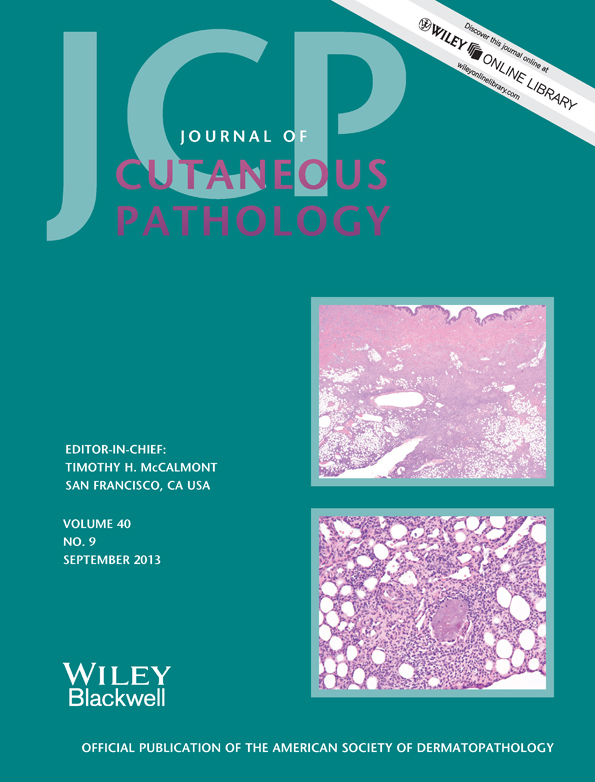Diffuse dermal angiomatosis associated with calciphylaxis in a patient with end-stage renal disease
Abstract
Diffuse dermal angiomatosis (DDA) represents a benign, acquired, reactive proliferation of vessels. DDA is clinically characterized by painful livedoid plaques with central ulceration, and the histopathologic hallmark is diffuse endothelial cell hyperplasia in the dermis. DDA has been rarely reported in association with calciphylaxis, a condition characterized by calcification of arterial walls with accompanying thrombosis and cutaneous necrosis. We present a case of a 72-year-old man with end-stage renal disease on peritoneal dialysis who presented with painful lesions on his legs, and was found to have DDA in the setting of calciphylaxis. The possible pathogenesis linking DDA and calciphylaxis is discussed.




